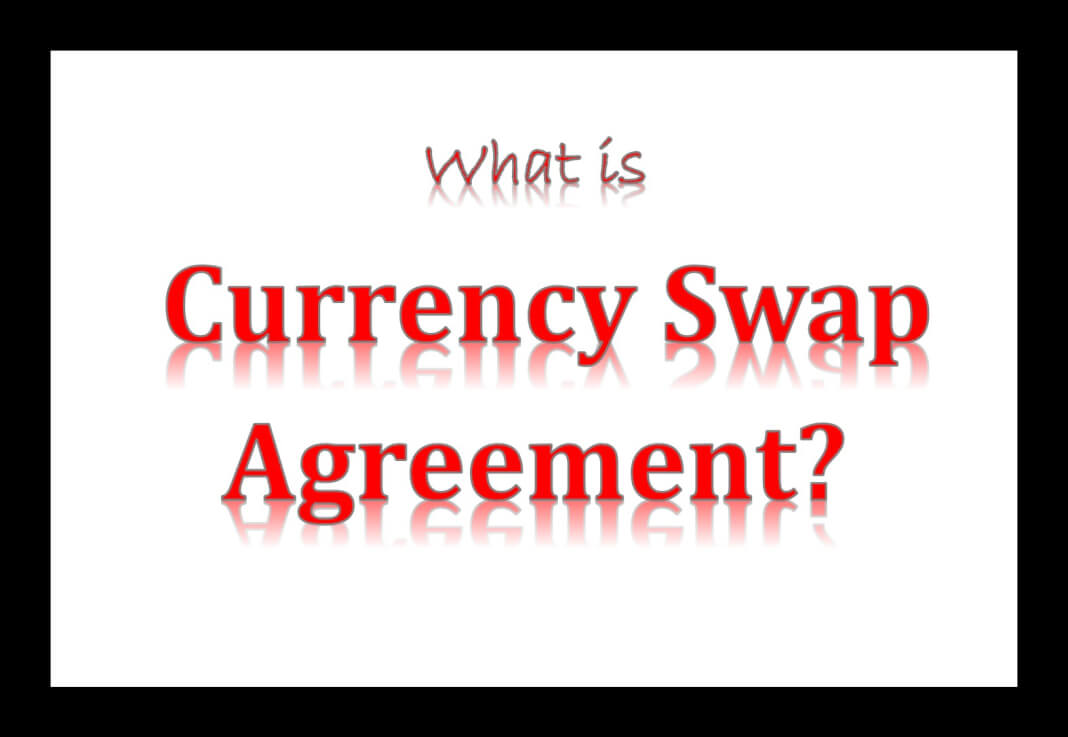
The word swap means exchange. A currency swap between two countries is an agreement or contract to exchange currencies (of the two countries or any hard currency) with predetermined terms and conditions.
Often the popular form of currency swap is between two central banks. Here, the main purpose of currency swap by a central bank like the RBI is to get the foreign currency form the issuing foreign central bank at the predetermined conditions (like exchange rate and the volume of currency) for the swap. Besides supporting the domestic currency and foreign exchange market, another main purpose of currency swap is to keep the value of the foreign exchange reserves kept with the central bank.
What is the purpose of currency swap?
As mentioned, the main purpose of currency swaps is to avoid turbulence and other risks in the foreign exchange market and exchange rate. Central banks and governments engage in currency swaps with foreign counterparts to ensure adequate foreign currency during the time of foreign currency scarcity. Both works with the same objective and through similar mechanism.
Often, the turbulence comes when a country faces scarcity of foreign currency which may led to currency crisis and steep depreciation of the domestic currency. In such a scenario, if the central bank/ government (read the RBI/Government) is able to get sizable foreign currency by exchanging domestic currency, it ensures availability of foreign currency. Hence the turbulence in the foreign exchange market or depreciation of the domestic currency/currency crisis can be avoided.
Besides currency or exchange rate stability, currency swaps between governments also have supplementary objectives like promotion of bilateral trade, maintaining the value of foreign exchange reserves with the central bank and ensuring financial stability (protecting the health of the banking system).
It is always desirable for a developing country like India to reach currency swap agreement with countries like USA/UK/EU/Japan whose currencies are hard currencies (used in international trade as medium of exchange).
Currency swap agreement can be bilateral or multilateral. The earliest currency swap was between U.S. Federal Reserve and the Central Bank of France signed on February 28, 1962.
Usually, currency swap agreements are of five types depending upon the nature and the status of the currencies swapped.
1) Exchange cash for cash vs cash for securities;
2) Exchange conditional vs unconditional swaps;
3) Exchange reserve currencies on both sides;
4) Exchange reserve currency for non-reserve currency; and
5) Exchange non-reserve currencies on both sides.
India-Japan currency swap agreement
India and Japan have signed a currency swap agreement during the visit of Prime Minister Modi to Japan on 28th of October 2018. The currency swap agreement is for US $75 bn and is a great opportunity for India to obtain foreign currency by exchanging rupee to Japan.
According to the initial reports, the swap involves US Dollar besides Japanese Yen and Indian Rupee. As part of the agreement, the Bank of Japan (Japanese central bank) will accept rupees and give dollars to the Reserve Bank of India (RBI) and, similarly, the RBI will take the yen and give dollars to the Bank of Japan to stabilize each other’s currency.
Though the central part of the agreement is Japanese commitment to exchange US Dollar for rupee from India, the Japanese Yen is one of the five currencies included in the IMF’s SDR basket and is counted as global hard currency. The India-Japan currency swap agreement seems to be exchange of reserve currency (Dollar) for non-reserve currency (rupee).
The currency swap with Japan will help India to pacify the depreciating trend of rupee. In future, the RBI can execute swaps rupee for Dollars to ensure stability in exchange rate.
Real utility of the currency swap agreement is that it will give the RBI to access $75 bn foreign exchange at a time when there are strengthening of current account deficit factors for India. It will give psychological effect on the foreign exchange market as the traders in the forex market will get convinced about the ability of the country to tackle foreign currency scarcity problem.
Already, the foreign exchange reserve of India came down from its peak of $413 billion in April 2018 to below $395 dollars, as on second week of October 2018.
*********









